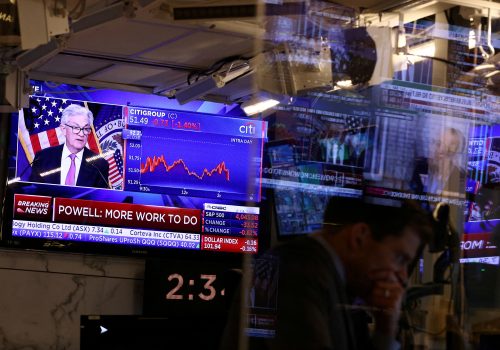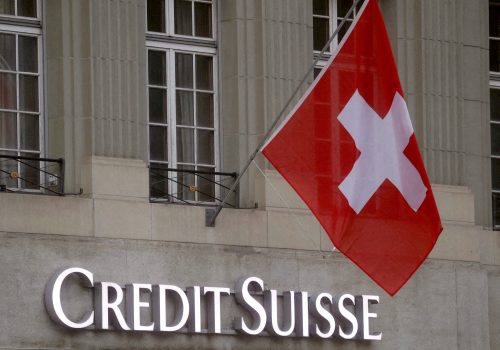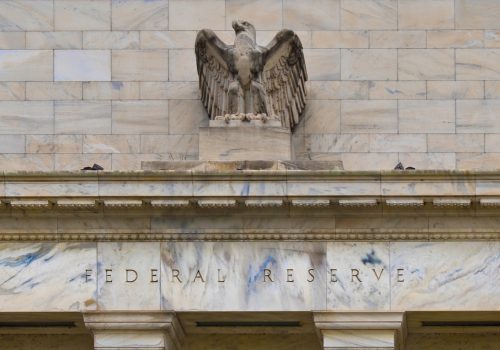These reforms can help stop digital bank runs
Welcome to the digital bank run era. The rise of online banking and social media platforms, which spread both real-time information and unsubstantiated rumors, can bring down banks in a matter of days or even hours, not weeks like in the past. The failures of Silicon Valley Bank (SVB) and Signature Bank in March might be the first such banking crisis in our hyper-connected age. They will not be the last.
The speed and scale of digital bank runs have upended regulatory guardrails and left regulators no time to formulate proper responses. As a result, regulatory reforms are needed. In addition to changing the 2018 law that exempted US banks with assets of less than $250 billion (instead of $50 billion) from the full force of the 2010 Dodd-Frank law and strengthening bank supervisory practices, reforms should focus on the liquidity coverage ratio (LCR) requirement and the deposit insurance scheme. Reform is urgent, since banking crises can happen at any time and a possible recession is looming. At the same time, the Biden administration should proceed carefully, given the important ramifications of the measures in question.
Strengthened liquidity coverage requirements
A key plank of the Basel III reforms following the 2008 global financial crisis is the LCR, designed to address bank liquidity risks. Under the LCR requirement, banks must keep enough high-quality liquid assets (HQLA)—those that can be monetized quickly with no or little loss of value—to cover outflows of at least 3 percent of stable deposits and at least 10 percent of less stable deposits over thirty days. This requirement is intended to allow time for bank executives to take corrective actions and regulators to formulate appropriate responses. However, these ratio and time specifications are now rendered obsolete by the speed of digital bank runs. For example, SVB suffered a $42 billion deposit outflow on March 9 and a scheduled outflow of $100 billion the next day, when the Federal Deposit Insurance Corporation (FDIC) stepped in—totaling $142 billion, or 81 percent of the bank’s total deposits, in two days. In other words, banks satisfying their LCR requirements, as SVB did, can still be brought down by digital bank runs.
Moreover, the calculation of HQLA is flawed because it focuses on credit risk and not interest rate risk as well. HQLA consist of Level I assets (such as government bonds, which do not need to have haircuts, or discounts in calculating the numerator of the LCR); and Level II assets (such as corporate bonds, which have a 15 percent haircut). However, when SVB tried to sell its high-quality bond portfolio, including many US Treasury securities, it realized losses due to the increase in interest rates. This was another blow to the ebbing market confidence in SVB, accelerating the collapse.
To address these shortcomings, the LCR should be strengthened to increase the coverage of expected outflows of at least 25 percent of deposits—and probably more for uninsured deposits. Furthermore, all securities included in the HQLA should be marked to market, or priced according to prevailing market conditions, to avoid surprise losses when needed to cover deposit outflows. Interest rate risks—not just credit risks—must be fully incorporated in regulatory frameworks and supervisory practices.
A better way to protect deposits
US authorities invoked the “systemic risk exception” to protect large uninsured deposits at SVB and Signature Bank to prevent contagion to the banking system. They are expected to do so again if another bank with large uninsured deposits fails. However, they cannot raise the current $250,000 deposit insurance limit per customer per bank without congressional approval. Leaving aside the low chances of congressional action in this time of political polarization, two important issues need to be considered in deciding whether and how to insure all deposits.
First, costs matter. The FDIC insures $9.9 trillion, or 56 percent, of total bank deposits. Its Deposit Insurance Fund (DIF) has accumulated $128.2 billion from assessments on banks, amounting to 1.27 percent of insured deposits. The assessment rates range from 2.5 to 32 basis points (of total liabilities) for small banks and 2.5 to 42 basis points for large banks—the actual rates depend on banks’ risk profiles.
Resolving SVB and Signature Bank while protecting all their depositors has generated $22.5 billion of losses to the FDIC—which it will have to recoup by making additional assessments on banks ex post. Obviously, the FDIC would need more resources if it insures all deposits, as requested by the Mid-Size Bank Coalition of America, among others. At a minimum, the FDIC would have to double the assessment rates, significantly increasing the costs to US banks (and to their clients).
More importantly, even with higher assessment rates, the DIF would likely be in no position to deal with a widespread banking crisis if it has to protect all deposits—worth $17.7 trillion, or 75 percent of US gross domestic product. The public backstop to the FDIC would likely be used more often than just in “exceptional” cases if the government stands ready to protect all bank deposits. This would significantly enhance the extraordinary privileges accorded to banks in exchange for their provision of payment and other banking services. In other words, banks would take and create (when making loans) government-protected deposits at low or zero cost. Then they would reap the profits by investing the money while the government assumes the risk of their possible failures threatening the deposits. Such a business model would draw ample and justified criticism. It’s not the right move.
A better approach is to confirm that deposits rank higher than debt and equity in bank capital structure; and in case of failures, large depositors will get paid—beyond the insured minimum of $250,000—by using the bank’s HQLA as collateral to borrow from the Federal Reserve. This can be done either through the recently launched Bank Term Funding Program or, better still, the Discount Window, which does not involve any government subsidies. Any residual claims depositors have would be settled out of the proceeds of the sale or liquidation of the failed bank—accepting possible losses if these proceeds fall short. This procedure would expedite the payment of a meaningful chunk of uninsured deposits to avoid disrupting business transactions but still subject large depositors to some degree of market discipline.
In short, reforms are needed to address the problems revealed by the March banking crisis—even though there could be strong resistance from various quarters. But the implications of inaction and of some reform measures, especially protecting all deposits, are so important that they should be discussed publicly—and more seriously than they have been so far.
Hung Tran is a nonresident senior fellow at the Atlantic Council’s GeoEconomics Center, former executive managing director at the Institute of International Finance, and former deputy director at the International Monetary Fund.
Further reading
Thu, Mar 16, 2023
It’s not 2008: Keep calm as central banks carry on
New Atlanticist By Josh Lipsky
This week's financial drama may look familiar, but the world's financial firefighters have been preparing for this moment for nearly fifteen years.
Wed, Mar 15, 2023
Bailouts create a moral hazard even if they are justified. Is there another way?
New Atlanticist By Hung Tran
The US guarantee for Silicon Valley Bank and possible Swiss intervention for Credit Suisse raise important questions. Here's one alternative approach for large depositors.
Mon, Mar 20, 2023
The Federal Reserve’s dilemma: Choosing between monetary policy and financial stability
Econographics By Barbara C. Matthews
The monetary-policy challenge that the Fed faces now cannot be overestimated.
Image: A woman walks past a Signature Bank location in Brooklyn, New York, on March 20, 2023. Photo via REUTERS/Brendan McDermid.


